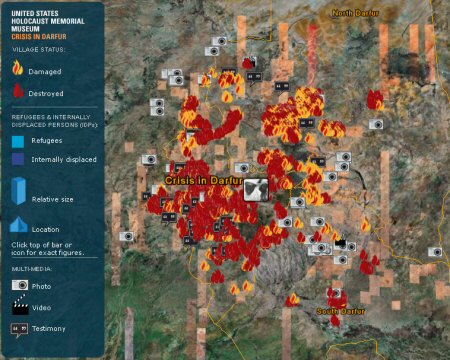When you hear about sad stories from far away, they rarely touch you. It's hard to be impressed by the sufferance of someone who doesn't have too much in common with you.
The United States Holocaust Memorial Museum presents in a Google Earth layer the consequences of a conflict from Darfur, a region situated in Sudan.
BBC tells the story:
Sudan's government and the pro-government Arab militias are accused of war crimes against the region's black African population, although the UN has stopped short of calling it genocide. (...)
The conflict began in the arid and impoverished region early in 2003 after a rebel group began attacking government targets, saying the region was being neglected by Khartoum. The rebels say the government is oppressing black Africans in favour of Arabs. (...)
[The government] admits mobilising "self-defence militias" following rebel attacks but denies any links to the Janjaweed, accused of trying to "cleanse" black Africans from large swathes of territory. Refugees from Darfur say that following air raids by government aircraft, the Janjaweed ride into villages on horses and camels, slaughtering men, raping women and stealing whatever they can find.
"I was living with my family in Tawila and going to school when one day the Janjaweed entered the town and attacked the school. We tried to leave the school but we heard noises of bombing in the town and started running in all directions. All the girls were scared. The Janjaweed entered the school and caught some girls and raped them in the class rooms. I was raped by four men inside the school. When they left they told us they would take care of all of us black people and clean Darfur for good."
The refugees, their destroyed villages and a disturbing story - in a Google Earth layer (requires Google Earth, obviously).

No comments:
Post a Comment